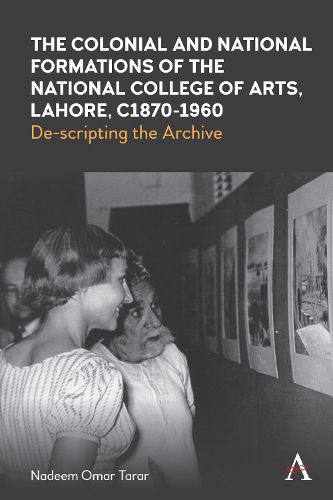Readings Newsletter
Become a Readings Member to make your shopping experience even easier.
Sign in or sign up for free!
You’re not far away from qualifying for FREE standard shipping within Australia
You’ve qualified for FREE standard shipping within Australia
The cart is loading…






Utilising archival sources, this book examines the formation and evolution of the National College of Arts (NCA) in Lahore, a pivotal institution shaping the art, architecture, and design landscape of contemporary Pakistan since the 19th century.
Theoretical analysis reveals how the NCA, as a bureaucratic entity, has influenced the development of design schools, museums, and artistic practices in both British India and Pakistan, initially under the influence of British art education from South Kensington. The study traces the institution's history from its metropolitan European roots during the British colonial period through the American restructuring of art education administration and pedagogy in the early years of independence. It explores how frameworks of art history and anthropology have been used to construct and objectify Pakistani art and artists.
By deconstructing these disciplinary frameworks, the book sheds light on how imperial and nationalist discourses have intersected to influence and redefine artistic and cultural identities within Pakistan.
$9.00 standard shipping within Australia
FREE standard shipping within Australia for orders over $100.00
Express & International shipping calculated at checkout
Utilising archival sources, this book examines the formation and evolution of the National College of Arts (NCA) in Lahore, a pivotal institution shaping the art, architecture, and design landscape of contemporary Pakistan since the 19th century.
Theoretical analysis reveals how the NCA, as a bureaucratic entity, has influenced the development of design schools, museums, and artistic practices in both British India and Pakistan, initially under the influence of British art education from South Kensington. The study traces the institution's history from its metropolitan European roots during the British colonial period through the American restructuring of art education administration and pedagogy in the early years of independence. It explores how frameworks of art history and anthropology have been used to construct and objectify Pakistani art and artists.
By deconstructing these disciplinary frameworks, the book sheds light on how imperial and nationalist discourses have intersected to influence and redefine artistic and cultural identities within Pakistan.